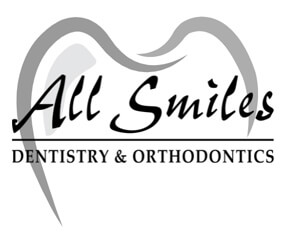
When it comes to your kids’s health, we often think of things like colds, scrapes, or tummy aches. But what about their teeth? Dental illnesses in children are more common than many people realize, and staying on top of kids’ dental health is crucial for their well-being.
From cavities to gingivitis, tooth sensitivity, and even orthodontic issues, the dental challenges kids face can shape their oral health for a lifetime.
Here, we are going to discuss the most prevalent dental diseases in children, their symptoms, and how to ensure the smile of your little one remains healthy to form the basis of their later oral health.
The first dental issue with kids is cavities. Indeed, the research indicates that nearly 1 out of 5 children has untreated tooth decay, which may cause pain, infection, and even difficulty eating or speaking. But what is the cause of cavities, and why are children so prone?
Cavities form when the bacteria in the mouth break down the sugar and starches, reducing them to acid, which slowly penetrates the tooth enamel. Since children are more prone to snacking, especially on sweet foods and beverages, they are also more prone to cavities. Moreover, children might not be trained on how to brush and floss yet, and thus, an accumulation of plaque with bacteria. To identify cavities, it is possible to see certain typical symptoms, which are the appearance of dark spots on the teeth, pain in the tooth, and intolerance of hot or cold food.
Regular dental check-ups are essential because many cavities can go unnoticed until they become painful. One indication that the decay has developed and, in some cases, requires removal is pain. Make sure your child brushes his teeth twice a day, flosses his teeth, and does not feed on sweet stuff. The use of fluoride toothpaste and drinking water containing fluoride can also be useful, as this mineral reinforces tooth enamel.
Gingivitis is not a disease of adults only. Children are also at risk of getting gingivitis, particularly when they fail to brush and floss their teeth. Gingivitis is the inflammation of the gums as a result of a chronic infection by the bacteria in the plaque, and may be easily neglected. Gingivitis is not as easy to spot. Signs of gingivitis include swollen, red, or bleeding gums. If your child’s gums bleed after brushing or flossing, it’s time to look into their oral hygiene habits.
Gingivitis can be viewed as a small issue; however, when left unaddressed, it can cause more serious gum diseases that are much more difficult to reverse. The most effective preventive measure in gingivitis is to educate about good dental hygiene at a young age. Oversaw brushing and flossing, and promoted the use of a soft-bristled toothbrush, which is soft on young gums. Regular visits to the dentist are also crucial in spotting early signs before gingivitis progresses.
Does your child avoid cold or hot food? They may possess sensitive teeth. Tooth sensitivity is the experience of the loss of the protective enamel, leaving the inner layers of the tooth exposed. Though more common in adults, kids can also experience tooth sensitivity due to cavities, enamel erosion, or dental injuries. Tooth sensitivity can result from acidic foods, tooth grinding, or improper brushing techniques that wear away enamel. Kids who consume a lot of acidic foods or drinks, like citrus or soda, are at a higher risk for enamel erosion. Toothpaste that is formulated to address tooth sensitivity is recommended to aid in the management of the condition. A healthy diet that is low in acidic or sweetened foods should also be promoted. In case of sensitivity, your dentist will be able to evaluate the case and prescribe subsequent measures.
Orthodontics is not only about aesthetic matters, but also influences the ability of a child to chew, speak, and practice oral hygiene. Children usually have misaligned teeth, overbites, underbites, and other alignment problems. The sooner these issues are addressed, the easier they are to treat. The causes of orthodontic problems include genetics, thumb-sucking, prolonged pacifier use, and even some dental illnesses that can contribute to orthodontic issues. As children grow, orthodontic screenings are essential to catch these problems early.
Dentists usually recommend an initial orthodontic check by age 7, before the child enters their biggest growth spurt. This is because the growth spurt can be manipulated to help correct some orthodontic problems. To prevent orthodontic problems or to treat orthodontic problems, braces, retainers, or other orthodontic treatments may be suggested based on the severity of the alignment problem. Early treatment can sometimes prevent more complex issues, making it worthwhile to visit a pediatric dentist who can guide you on the best course of action.
Although every dental problem has its own causes and methods of treatment, hundreds of preventive strategies are common to all. The following are some practical suggestions to keep your child at an early age with healthy teeth:
Early education about good oral hygiene practices is considered to be one of the most optimal investments in the health of your child. And keep in mind, it is not only about preventing cavities and gingivitis, but also establishing a lifetime of happy and secure smiles.
It is best for children to go to the dentist every six months for a teeth checkup and cleaning. Regular checkups will help catch cavities or gum problems early on before they become painful or costly to treat.
Children often have cavities because they eat snacks that are sweet and do not brush well. Even if your child brushes their teeth, bacteria and plaque can form as a result of poor brushing; even if they do brush twice a day, they may not be brushing in those areas.
No, bleeding gums are an early sign of gingivitis, a mild gum disease. Check your child’s brushing habits and make sure they’re not skipping flossing. If bleeding continues, schedule a dental visit.
Yes, prolonged thumb-sucking or pacifier use can affect tooth alignment and cause overbites or open bites. If your child still sucks their thumb beyond age four or five, ask your dentist for gentle strategies to stop.
Healthy teeth are maintained by a balanced diet with high contents of fruits, vegetables, dairy, and whole grains. Restrict sweetened foods, sticky candies, and sodas that nourish cavity-causing bacteria.


Dental Filling or Dental Crown: How to Decide What Your Tooth Needs





The Hidden Risks of Medical Tourism in Dentistry
| M | T | W | T | F | S | S |
|---|---|---|---|---|---|---|
| 1 | 2 | 3 | 4 | 5 | ||
| 6 | 7 | 8 | 9 | 10 | 11 | 12 |
| 13 | 14 | 15 | 16 | 17 | 18 | 19 |
| 20 | 21 | 22 | 23 | 24 | 25 | 26 |
| 27 | 28 | 29 | 30 | 31 | ||

